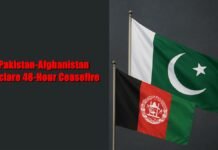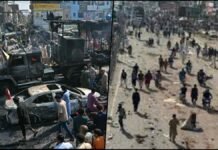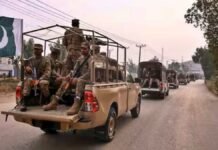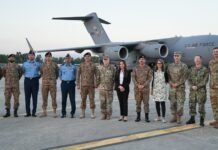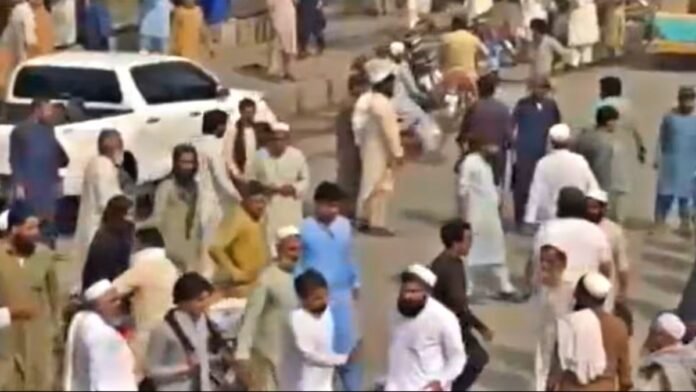
Key Points:
- What Happened: At least 30 civilians, including women and children, were killed in what local sources describe as a Pakistan Air Force (PAF) airstrike on Matre Dara village in the Tirah Valley of Khyber Pakhtunkhwa.
- The Alleged Weapons: Sources claim the attack, which occurred around 2 a.m. on Sunday, involved Chinese-made JF-17 Thunder jets dropping at least eight LS-6 precision-guided glide bombs.
- Official Denial: The Pakistan Army has categorically denied carrying out the airstrike, attributing the deaths to a “large cache of explosives” hidden by “Khawarij terrorists” that accidentally detonated.
- Army’s Version: Military spokespersons claim the explosion killed 12-14 terrorists and 8-10 civilians who were being used as human shields.
- Tribal Protest: In response, the local Akakhel tribe has launched a sit-in, planning to protest by placing the bodies of the male victims outside the Corps Commander’s House in Peshawar.
New Delhi: At least 30 civilians, many of them women and children, were killed in a devastating pre-dawn incident in the Matre Dara village of Khyber Pakhtunkhwa’s Tirah Valley on Sunday. Local residents and eyewitnesses have accused the Pakistan Air Force (PAF) of carrying out a deadly airstrike, a claim the Pakistan Army has vehemently denied, instead blaming the carnage on an accidental explosion at a terrorist munitions depot.
The incident has ignited fury among local Pashtun tribes, who have accused the state of a “massacre” and launched protests, escalating tensions in a region already fraught with conflict between the military and militant groups like the Tehreek-i-Taliban Pakistan (TTP).
Conflicting Accounts: Airstrike or Accidental Blast?
According to local sources and intelligence reports, the assault occurred around 2 a.m. when Chinese-supplied JF-17 Thunder jets dropped at least eight LS-6 precision-guided bombs on the sleeping village. Eyewitnesses described homes being flattened instantly, leaving families buried under rubble. By dawn, the village was reportedly “littered with bodies,” with no verified militant casualties. Analysts cited by news outlets claimed the use of precision bombs suggests “intent, not collateral damage,” raising questions of violations of international humanitarian law.
However, the Inter-Services Public Relations (ISPR), the military’s media wing, issued a strong denial. Their official statement claimed that a large cache of explosives hidden by “Khawarij terrorists” (a term used for extremist outliers) detonated inside a house, causing it and surrounding homes to collapse. The army stated the blast killed 12-14 terrorists and “8-10 civilians who were used as human shields,” framing the incident as a consequence of militant tactics.
Tribal Fury and Calls for Justice
The military’s explanation has been rejected by the local community. The Akakhel tribe convened an emergency jirga (tribal council) and announced a powerful form of protest. They decided to bury the female victims but transport the bodies of the men and children to Peshawar to be placed outside the Corps Commander’s House, demanding accountability.
A sit-in has already begun at Khyber Chowk, with protesters accusing Islamabad of “slaughtering innocents in the name of counter-terrorism”. Pashtun activists and tribal elders have flooded social media with accusations of war crimes and “ethnic cleansing tactics,” warning that such actions will only fuel further anti-state resentment and militancy.
The incident highlights a troubling pattern in the region. Human rights organizations have repeatedly warned about the high civilian cost of Pakistan’s counter-terrorism operations in Khyber Pakhtunkhwa. In June, Amnesty International noted an “alarming disregard for civilian life,” and independent monitors ranked Pakistan seventh globally for civilian casualties from explosive weapons in 2024. As rescue operations continue and the death toll is feared to rise, the conflicting narratives and local outrage threaten to further destabilize Pakistan’s volatile tribal belt.

































